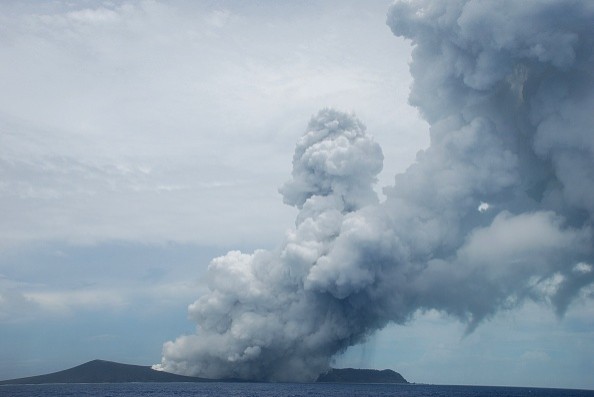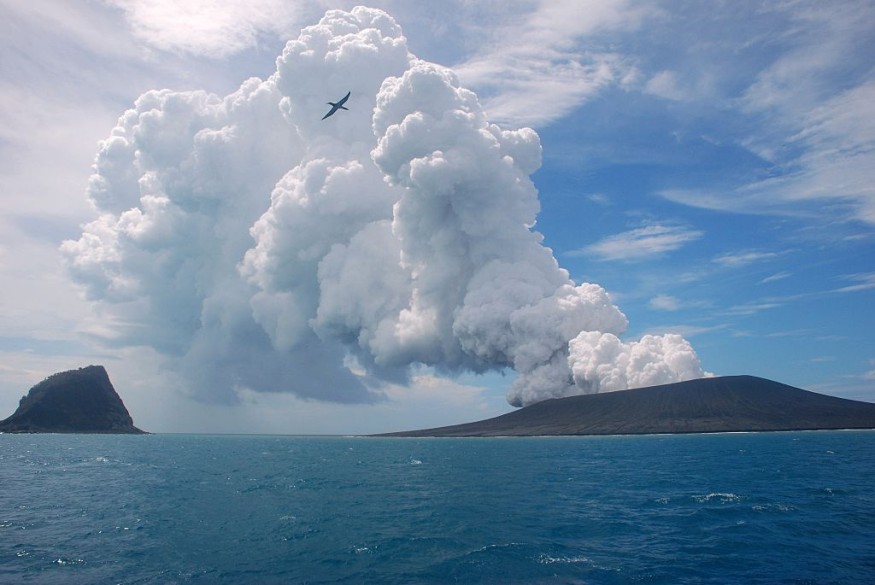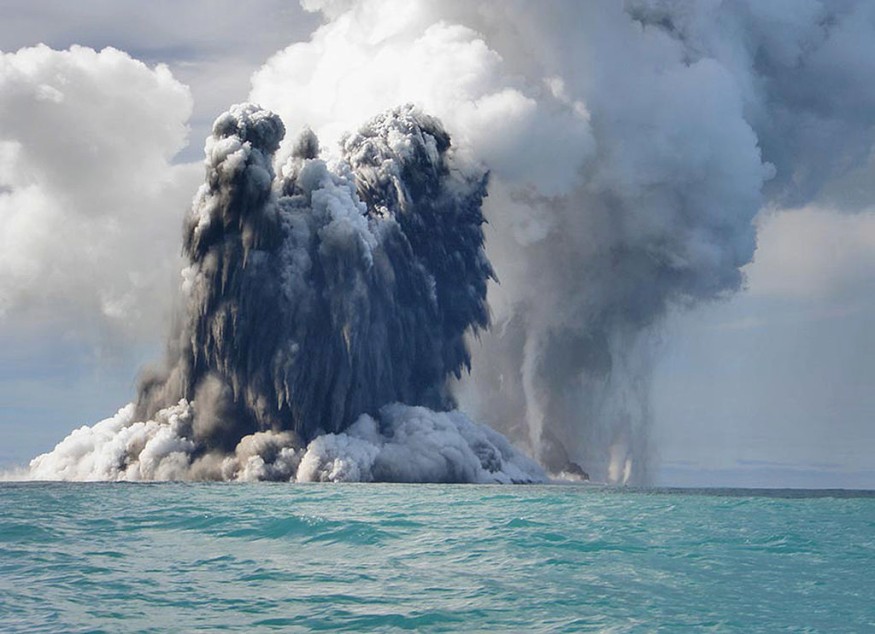The eruption of the Tonga volcano triggered an air shock wave that circled the globe three times and sent tsunami waves as far as California and the Caribbean, nearly 7,800 miles (12,500 kilometers) distant.
Overall, it was an extremely unusual occurrence. Volcanoes are responsible for about 5% of tsunamis, but earthquakes are responsible for more than 80%.

Tsunamigenic
Tsunamigenic - or tsunami-generating - landslides are a lesser-known process that can produce a tiny fraction of tsunamis. These waves occur without warning when steep, unstable cliffs give way after an earthquake or because of erosion, drought, or severe rain.
Because of this, Amir Salaree, a seismologist at the University of Michigan, refers to landslide tsunamis as "silent killers" because they're generally smaller and more confined than tsunamis caused by earthquakes or volcanoes, making them more challenging to detect.
They're also quite challenging to learn. On the other hand, a new study has revealed how the threat to individuals living close varies based on the depth of water in which tsunami waves occur.
The researchers explain how shallow seas may trap a tsunami along the shoreline, resulting in disastrous repercussions on the island it came from, by looking into the 1930 Cabo Girão "Deadly Wave" tsunami that swamped Portugal's island of Madeira.
Flatter portions of shoreline, where people are more likely to work and reside, take the brunt of the tsunami's impact, and their proximity to the landslide means they have little time to flee to higher ground.
Madeira

The island of Madeira, which is famed for its eponymous wine, is encircled by cliffs that rise to 1900 feet (580 meters) over the North Atlantic Ocean's blue seas. It also has a lengthy track record of landslides along its coastline.
A granite wall at Cabo Giro, the world's second tallest sea cliff, unexpectedly burst apart in the morning of March 4, 1930. The comparatively shallow ocean was flooded with enough rock and debris to fill 287,000 dump trucks, establishing a shelf that extended the beach beneath the newly disfigured cliff face.
The water immediately erupted in a massive 26-foot (8-meter) wave. As it approached the settlement, it seemed "like a cloud," according to witnesses.
The wave had decreased to roughly 15 feet (4 meters) in height when it settled only a few minutes later. Despite this, it killed 19 peopl`e when it surged across the shore.
Developing Models
Based on these descriptions, the study team proceeded backward, developing a numerical model that captures what occurs when tsunamis occur by comparing the island's current topography with historical records of the occurrence.
They discovered that shallow water diminishes the landslide's energy, making it less likely to send waves to islands further away. If the landslide occurs in deeper water, the energy of the wave is free to grow and move to the open ocean.
It's like executing a cannonball into the deep end of the pool, which drenches everyone near and far, vs jumping into the shallow end, which creates tumultuous, choppy waves that mostly stay within reach.
In the case of Madeira, the shelf of the island steered the wave back to the nearest shores, preventing it from propagating into the deeper sea.
Although the tsunami's energy decreased as it went around the island, it was not fast enough to prevent the tsunami from having a significant local impact. The same concern exists for other steep volcanic islands surrounded by shallow oceans.
Tonga's Explosion

Although Tonga's supercharged volcanic explosion was heard worldwide, it is most likely a once-in-a-lifetime occurrence. It does, however, underscore the susceptibility of island nations to tsunamis, mainly because climate change may increase the likelihood of catastrophic landslides.
Volcanic islands, which are isolated from the rest of the world by vast swathes of ocean, are at the forefront of the climate issue. Tsunamis are more likely to wreak havoc on low-lying island nations, with little to no protection from increasing sea levels. Tsunamis may also devastate reefs threatened by warming waters, leaving coasts vulnerable to storm surges and erosion.
For more Space news, don't forget to follow Nature World News!
© 2025 NatureWorldNews.com All rights reserved. Do not reproduce without permission.





